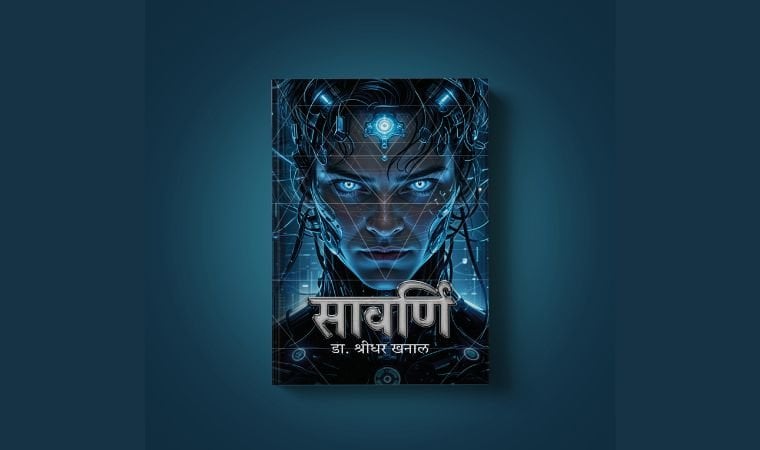A cradle of human civilization turning into its grave

By Devendra Gautam
The afternoon of February 11, 2023, at New Baneshwor Chowk, Kathmandu. A portly, middle-aged man barks on his cell phone amid a laid-back Saturday at the heart of Nepal’s quaint Capital that is home to important addresses like the Federal Parliament, formerly the Birendra International Convention Centre and the Constituent Assembly building and one of the centres of public scorn these days as a nerve centre of an increasingly unpopular and corruption-ridden polity: Jaise bhi ho Shalgram Shila chahiye.
The power centre erupts every now and then, thanks to a soaring unpopularity of powers that be, who have not been able to deliver much despite their decades-long, vice-like grip onto power and nine long years after the promulgation of a Constitution –– the seventh charter in a space of 76 years –– through a Constituent Assembly in its second term. A major eruption occurred in the afternoon of January 24 last year, when Prem Prasad Acharya (37), a struggling entrepreneur brimming with ideas, immolated himself near the parliament building after citing in his social media posts rampant corruption and taking names of those who had driven him to despair, even as a motorcade carrying the then Prime Minister Pushpa Kamal Dahal sped past.
Back to the laid-back Saturday.
Apparently, the individual, most probably from India, in his condescending tone and tenor, was ordering someone down a shady, cross-border supply chain to see to it that he gets the Shalgram (the Hindi name given for Shaligram, the ammonite pebbles considered sacred and containing fossilized imprints of ancient sea creatures found only in the Kaligandaki river), come what may.
Apparently, as the construction and consecration of the Ram Temple in Ayodhya had become the main election agenda for the ruling Bharatiya Janata Party seeking a third straight term in office under the leadership of Narendra Modi, getting those rocks from the Kaligandaki had become super-important for carving out the statues of Ram Lalla (lovely, cuddly Ram in his childhood avatar) and his consort Sita, the daughter of Mithila King Janak of Nepal.
Roughly a year from that day, Ayodhya, 448 kilometres (approx) of driving distance away from Kathmandu, witnessed a grand inauguration of the Ram Temple (on January 22, 2024) with two Calcite and Quartzite rocks sourced from Thulo Paharo, Kaligandaki rural municipality in Myagdi district, transported with the Nepali taxpayers’ money and placed outside the shrine’s sanctum sanctorum, as if they were two Nepali youths stationed there for guarding the deities. Wish Nepal’s geologists, government representatives, religious figures and political leaders would, one day, regain the energies to conserve our heritages, including our lifelines—-our rivers—-instead of burning themselves out to locate the heritages on our sacred riverbanks, all for transporting them across the border for some grand religious revival project or the other.
Anyway, much water has flown down the Kaligandaki and drained into the Ganga and countless Shaligram rocks have ‘vanished’ just like that from the river since then and well before, mainly due to unabated mining for construction materials like sand and boulders and unabated access to all sorts of peoples along the riverbanks where there’s no presence of the country’s security apparatuses, meaning anyone can lift anything they want and get away with it.
A collision between couriers, shop-owners and seekers and, above all, criminal neglect on the part of governments at the centre, the provinces and the municipal level, which have not bothered to deploy guards along the riverbanks considered the cradle of human civilisation, has made it all possible.
A road along the Kaligandaki has become a lifeline for those involved in the illicit trade that has seen the sacred stones stolen in broad daylight and transported beyond borders.
But this is not the end of Kaligandaki’s exploitation. A diversion scheme intended to channelize the Gandaki waters in the name of providing for parched populations of Rupandehi and Kapilvastu districts, and beyond recently got an all-clear from Nepal’s top court, meaning the river may remain only on the map, sooner than later.
While Nepal has achieved some success in the repatriation of other heritages stolen mainly from the Kathmandu valley at different points in time from different museums and private collectors based abroad, it has not been able to retrieve the Shaligrams and bring those behind this dastardly crime against both divinity and humanity to justice, thanks to utter apathy on the part of state authorities.
On the contrary, the government seems to be encouraging the unchecked and unlawful extraction and transportation of riverine resources beyond the national borders, boosting further the morale of those shady elements operating along the banks of the Kaligandaki and beyond. The act of locating and transporting the two giant rocks in the name of so-called Shaligram diplomacy is the latest, living proof of that dangerous tendency.
In this process, the government seems to have forgotten that the Gandaki is not just the name of a river for local communities. Just like our rivulets and brooks drain into the river, our lives go with its flow and end with her. On her banks, we take holy dips during festivals like the Nepali New Year and Maghe Sankranti. On her banks, we cremate our dead and pray for their easy passage through different worlds, believing that life does not end after death, that to liberate oneself from a seemingly endless cycle of birth and death, one has to have their sins washed away, which is believed to take several cycles of birth and death depending on the gravity of sins committed.
The earth-moving equipment operating with impunity along the cradle of human civilization for extraction of riverine materials is turning the cradle into a grave. A rampant theft of precious resources is an unforgivable attack on our traditional way of life that is in sync with Mother Nature and Father Sky, a way of life that regards rivers as sacred.
The time has come for a conscious citizenry to rein in this rampant extraction of Gandaki’s resources and fight nefarious designs to ultimately steal the river and sell the local communities down the river.
Source : https://www.peoplesreview.com.np/2024/11/02/a-cradle-of-human-civilization-turning-into-its-grave/






